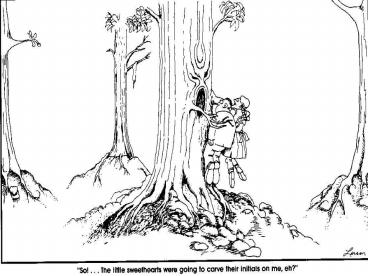Human%20Impact%20on%20the%20Evolution%20of%20the%20Cheeta!! - PowerPoint PPT Presentation
Title:
Human%20Impact%20on%20the%20Evolution%20of%20the%20Cheeta!!
Description:
Human Impact on the Evolution of the Cheeta!! Chapt. 22: Constructing and Using Phylogenies One Species from Another!! I DON T BELIEVE IT!! – PowerPoint PPT presentation
Number of Views:262
Avg rating:3.0/5.0
Title: Human%20Impact%20on%20the%20Evolution%20of%20the%20Cheeta!!
1
(No Transcript)
2
(No Transcript)
3
Human Impact on the Evolution of the Cheeta!!
4
(No Transcript)
5
Chapt. 22 Constructing and Using Phylogenies
One Species from Another!! I DONT BELIEVE
IT!! Systematics-- the study of the
evolutionary relationships of organisms relation
ships of present-day organisms with the past.
How can we tell what species came from another?
What species are more closely related than
others? What species will persist into the
future? Taxonomy- the classification of
different species Taxon- a unit in a
classification system
Carolus Linnaeus- the binomial nomenclature system
I.e. Genus, species-- Homo sapiens
6
Binomial Nomanclature Genus name is capitalized,
species name is not, both are italicized.
e.g. Escherichia coli, Drosophila melangaster,
Agropyron smithii (also E. coli, D. melangaster,
Agropyron spp.or sp.)
Hierarchical Classification (order of taxons in
the Linnaean system) Species--Genus--Family--Ord
er-- Class--Phylum--Kingdom (see Fig. 22.2 for
the moss rose, Rosa gallica)
Systematics (1) Determine evolutionary
relationships and express them in phylogenetic
(family) trees (2) Express evolutionary
relationships in a classification system
What is the true phylogeny of a particular
group of organisms? Evidence fossils (extinct)
and living (extant) organisms
7
Cladistics and cladograms-- evolutionary trees
points at which branches occur,
respectively Clade- a complete portion of the
phylogeny that comes from a common ancestor
Phylogenetic tree- cladogram with dates of
branches common ancestor at bottom (Fig.
22.6)
Systematists must determine ancestral (original)
versus derived (changed from original)
traits
Special versus General homologous traits-- shared
by a few vs. shared by many
To construct a cladogram-- (1) select group of
organisms (2) choose traits to compare (3)
determine if they are ancestral or derived
8
Most challenging task of a cladogram- recognizing
divergence versus convergence in ancestral
traits, e.g. homlogous structures (cactus
spines and bat/bird wing).
PROBLEM Homoplasy convergent evolution of
same trait more than one time
(e.g.modified leaves and analogous wings of
insects and birds, Fig. 22.4). Homologies from
Analogies, Fig. 22.5)
Outgroups- a group branches off due to Special
homologous traits, but still have General
homologous traits in common
Table 22.1 and Fig. 22.6-- Derived traits in
vertebrates and a probable cladogram.
I.e. jaws, lungs, claws/nails all derived traits
feathers and fur (birds/mammals) derived from
claws and nails (reptiles).
9
MICROEVOLUTION-- alleles change changes in DNA
proteins (Review Chapt. 12)
Molecular Evolution and Phylogeny-- ancestry and
cladograms based on differences in proteins and
nucleic acids (RNA and DNA), no longer just
gross morphology
e.g. all land plants have 100 genes for making
RNA to control synthesis of photosynthetic
enzyme production
DNA Hybridization-- mix DNA of two
species--denatured --reassociated-- degree of
reassociation closer ancestry (Humans and
chimpanzees, 1.6 difference in DNA sequences
cow/pig 20)
Table 22.2 and Fig. 22.9 (panda bear ancestry
dogs split with racoons-pandas-bears)
10
Figure 22.10, Horseshoe crab evolution from over
600 mya !! Figure 22.13, Phylogeny of the Domains
and Kingdoms Where are the fungi in
terms of being a plant or animal?

